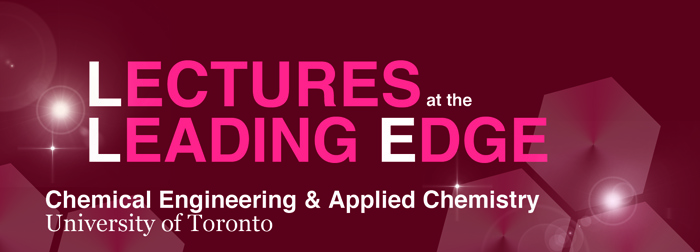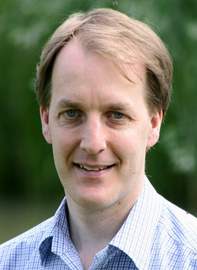
Neil Greenham
University of Cambridge
NEW MATERIALS FOR PHOTOVOLTAICS:
CHEAPER OF MORE EFFICIENT?
The cost of electricity from silicon-based photovoltaics has decreased hugely in the last decade, and in some areas of the world is already competitive with electricity from fossil fuels. What can new materials contribute to drive down the cost further? Printing of solution-processible semiconductors is potentially an attractive route, and I will discuss some of the current materials challenges for organic photovoltaics, and the physics that limits device efficiency. However, since the active layer is only a small part of the photovoltaic system, for large-scale applications it is difficult to compete by reducing the materials cost at the expense of efficiency. An alternative strategy is to use new materials to boost the efficiency of existing solar cells. I will discuss how this might be done using multiple exciton generation to generate extra current from high-energy photons in the solar spectrum, thus overcoming the Shockley-Queisser limit on the efficiency of single-junction solar cells. I will discuss the details of one approach using the quantum-mechanical process of singlet exciton fission in organic semiconductors.
Date/Time |
Location 200 College Street Wallberg Building Room 116 |
 NEIL GREENHAM is Professor of Physics at the Cavendish Laboratory, University of Cambridge. His research focuses on novel low-dimensional semiconductors that can be deposited from solution, in particular conjugated polymers and semiconductor nanocrystals. During his Ph.D. at Cambridge, which he completed in 1995, he made important early advances in the development of polymer light-emitting diodes, improving efficiencies and understanding the physics of device operation. He was a Miller Fellow at the University of California, Berkeley from 1995-96, where he developed the first solar cells based on blends of polymers with inorganic semiconductor nanocrystals. His research now focuses on photovoltaics, using device measurements, spectroscopy, advanced imaging techniques and modelling to understand and control loss mechanisms, thus improving device performance. He was awarded the Royal Society Kavli Medal and Lecture in 2013.
NEIL GREENHAM is Professor of Physics at the Cavendish Laboratory, University of Cambridge. His research focuses on novel low-dimensional semiconductors that can be deposited from solution, in particular conjugated polymers and semiconductor nanocrystals. During his Ph.D. at Cambridge, which he completed in 1995, he made important early advances in the development of polymer light-emitting diodes, improving efficiencies and understanding the physics of device operation. He was a Miller Fellow at the University of California, Berkeley from 1995-96, where he developed the first solar cells based on blends of polymers with inorganic semiconductor nanocrystals. His research now focuses on photovoltaics, using device measurements, spectroscopy, advanced imaging techniques and modelling to understand and control loss mechanisms, thus improving device performance. He was awarded the Royal Society Kavli Medal and Lecture in 2013.
| For more info: uoft.me/lle2016-17 |
Websites of Interest
- University of Toronto
- Faculty of Applied Science & Engineering
- Department of Chemical Engineering & Applied Chemistry
